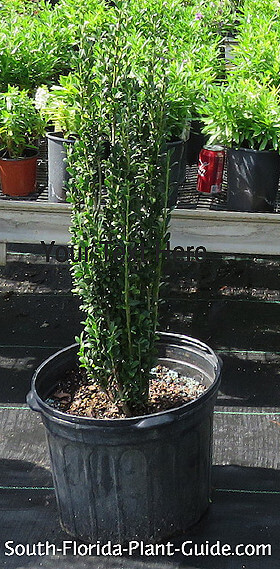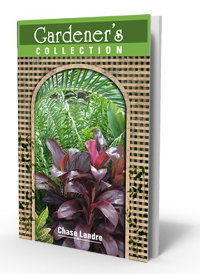Your Monthly Grow-zine
December 2021
Things to do in the garden this month...
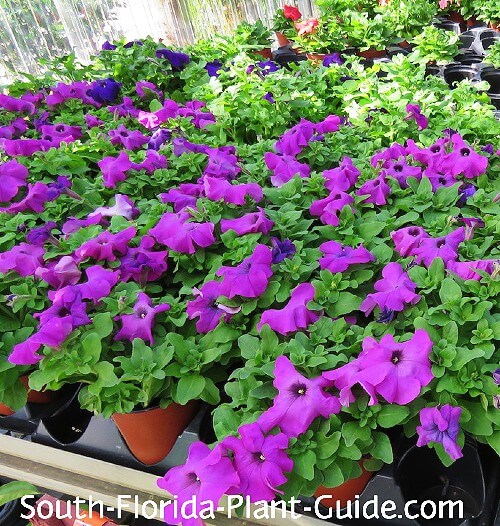 Winter annual Petunia
Winter annual PetuniaPlant winter annuals - and herbs and veggies! - now. They all prefer our cooler months, and there are lots more annuals to choose from than ones that like summer's heat.
Shop for winter color for your landscape. Visit your locally-owned nursery for plants that bloom in cool weather...Hong Kong Orchid Tree, Brazilian Red Cloak, Carolina Jasmine, and many other beauties!
Water once a week if we haven't had any rain.
Check plants for bugs. Take bagged cuttings to your local nursery for diagnosis and treatment options.
Saving a plant with cinnamon oil
A visitor to the website has a "family heirloom" plant - a Madagascar Palm that's lasted 3 generations...until now. She wrote:
"Help! My Madagascar Palm had 2 "arms" with leaves, but one had to be removed because it began to rot.
"The remaining arm is fine, but now the area that was cut has dried down to the "v," and it's starting to move down into the base. The dried part almost reminds me of cork.
"I saw a you tube video of someone using a sterilized knife to cut straight across below the rot and then sprinkling a bunch of cinnamon on the wound, I guess to stop any more infection. I would be hesitant to do something like that but I really want to save this plant."
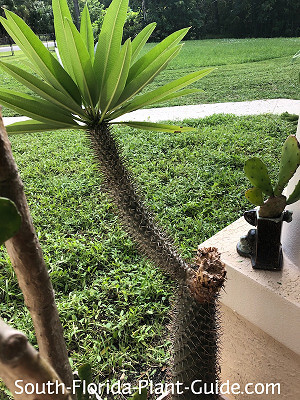
I asked my friend Scott, a botanist, for his recommendations. He sent detailed instructions to save the plant, including saving the main plant (with cinnamon oil!) and cutting off the healthy stem and replanting it.
Here's what he said:
"I would do two cuts to make two plants. The first is to cut off the remaining arm at the base where it meets the main stem. Check for any infection; if there is, cut about two inches up.
"Lay the stem in a shady place where it will not get water or dirt onto the cut area for about a day.
"You can then plant it into dry soil. All the leaves are going to wilt and fall off. Keep relatively dry, not bone dry, but succulent dry and it should root and grow in the spring.
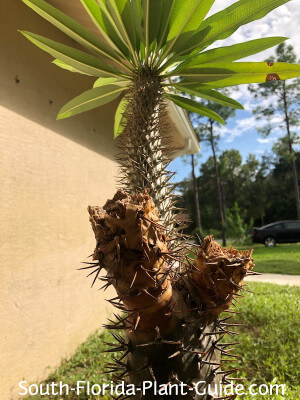
"The other cut is to cut straight about two to three inches below the sign of infection, check carefully for an infection. Because there is a higher chance for infection here, cut a few inches below until there is no infection.
"Always clean and sterilize the knife between cuts; you do not want to cut into infected tissue and then into healthy tissue.
"Let the cut dry for a day before attempting any preventative. It should branch and grow in the spring. I’ve seen Madagascar palms with hollows in their stem, so there is actually a good chance the Madagascar palm will survive without doing anything, but it would greatly increase the chances of survival.
"As to the cinnamon, I would not suggest doing it to a fresh cut, but allow it to dry it for a day.
"If possible I would use cinnamon oil as it is the cinnamaldehyde which is responsible for most of the antifungal activity of cinnamon. I am little leery of having particles of cinnamon on a cut and creating home for some diseases. (It kills some, not all types of fungus and bacteria.)
"Another method is to basically make tea with cinnamon (half a teaspoon to four fluid ounces of water), filter either by gravity or with a tea bag, and then spray onto the dried cuts.
"Regardless, most important is to keep fairly dry especially in the winter when they are mostly dormant. So check that irrigation, lawn sprinklers, or roof runoff won’t hit it. It should grow though, I’ve seen worse make it without care."
So, though this time of year isn't ideal to do heavy pruning of this type, it looks like this plant can be saved - hopefully to last a few more generations.
What's new at South-Florida-Plant-Guide.com
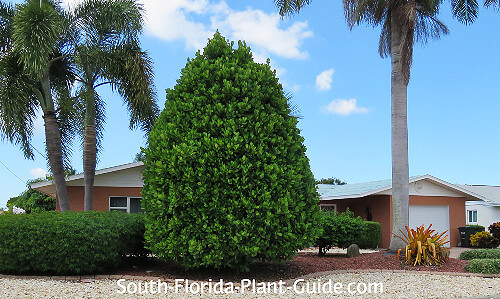
I've added this photo to the page on Clusia, with a note of warning..people don't always realize how big this plant can get! Though they can be trimmed smaller, it's something to consider when choosing a planting spot.
A visitor to the website recently wrote to say she wanted to buy a Clusia guttifera (AKA Small Leaf Clusia, the one pictured above)...but everywhere she saw this plant it was labelled "Pitch Apple."
Pitch Apple is the common name for Clusia rosea - the big mama of Clusias - and she was worried she'd end up buying the wrong plant.
I answered that I believe the plants she's seeing for sale are, in fact, Clusia guttifera, the one she wants... the one that everyone wants these days! I think nurseries and box stores (both of which rarely carry C. rosea) are just calling this Clusia Pitch Apple. It's easier to say and remember!
My latest ebooks are here!
"Best of the Grow-zines"
All the best info and ideas from past issues of our monthly newsletter - The Grow-zine!
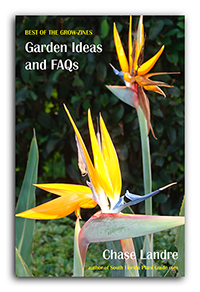
Garden Ideas & FAQs
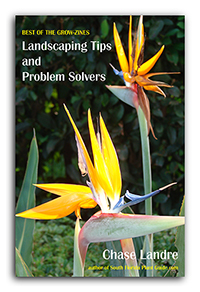
Landscaping Tips & Problem Solvers
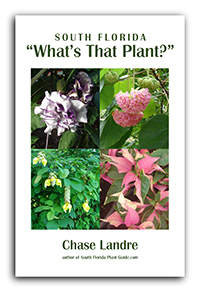
Buy both "Best Of" ebooks & get this one FREE!
Thanks for subscribing to the Grow-zine!
If you have any
questions, comments or suggestions about what you'd like to see included
in the Grow-zine - or the website - please let me know!
Merry Christmas!
Chase Landre

